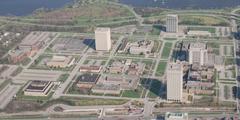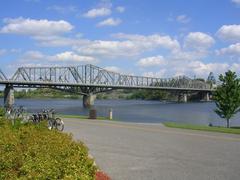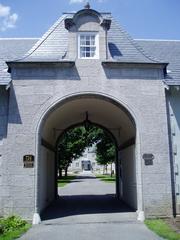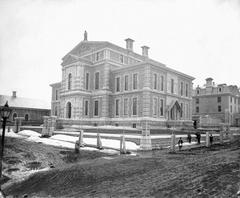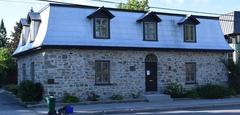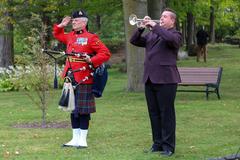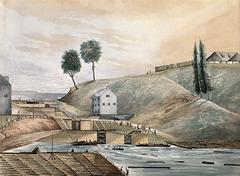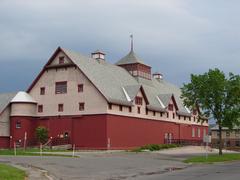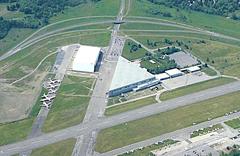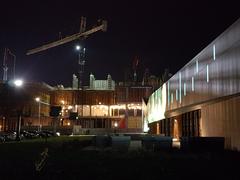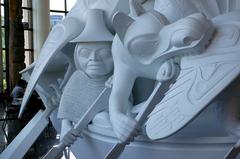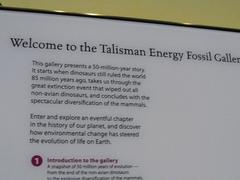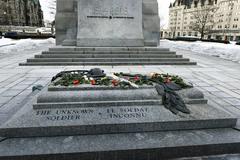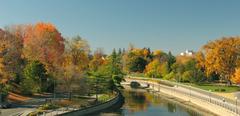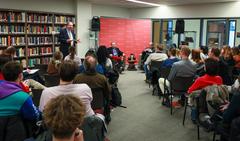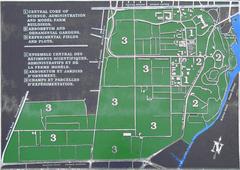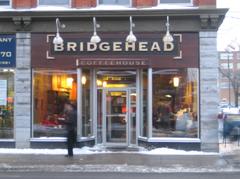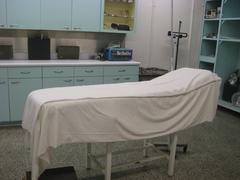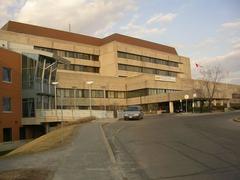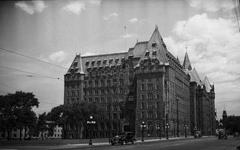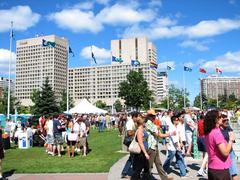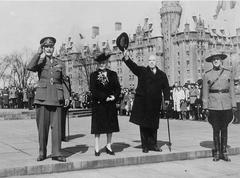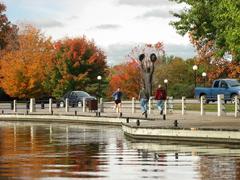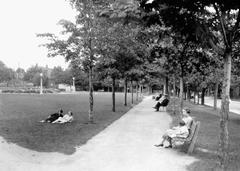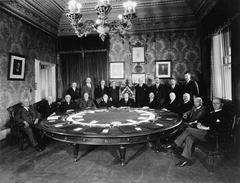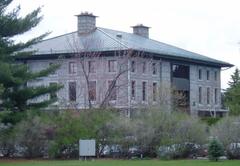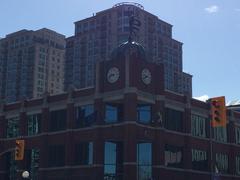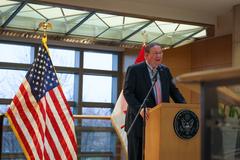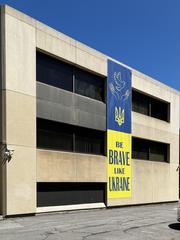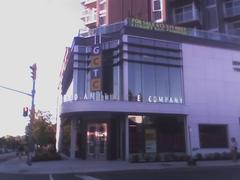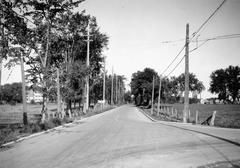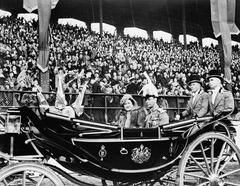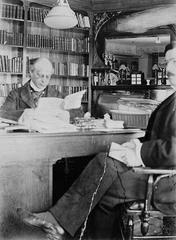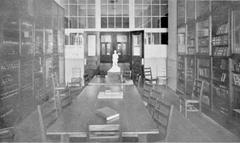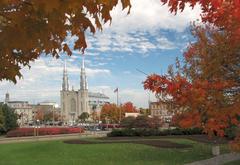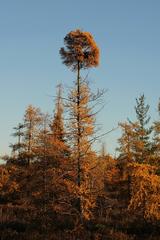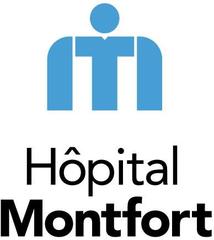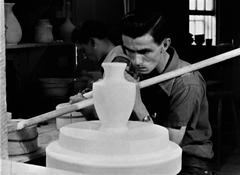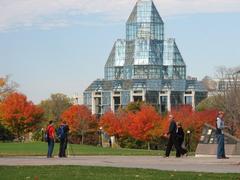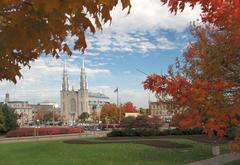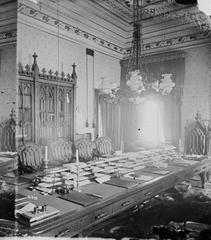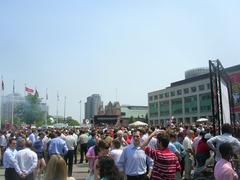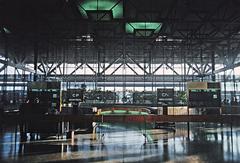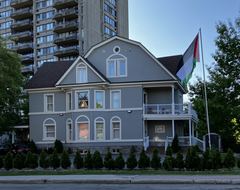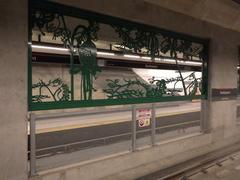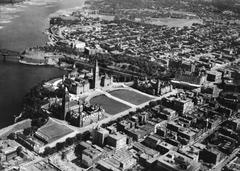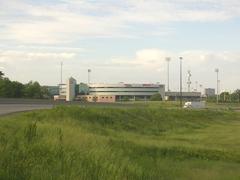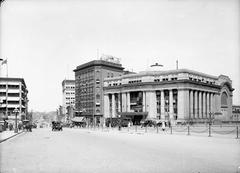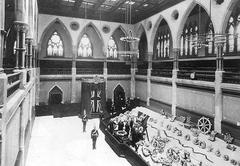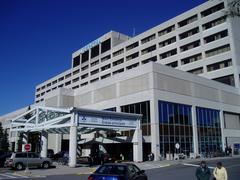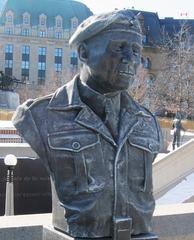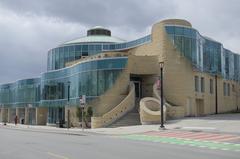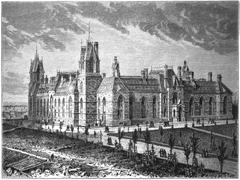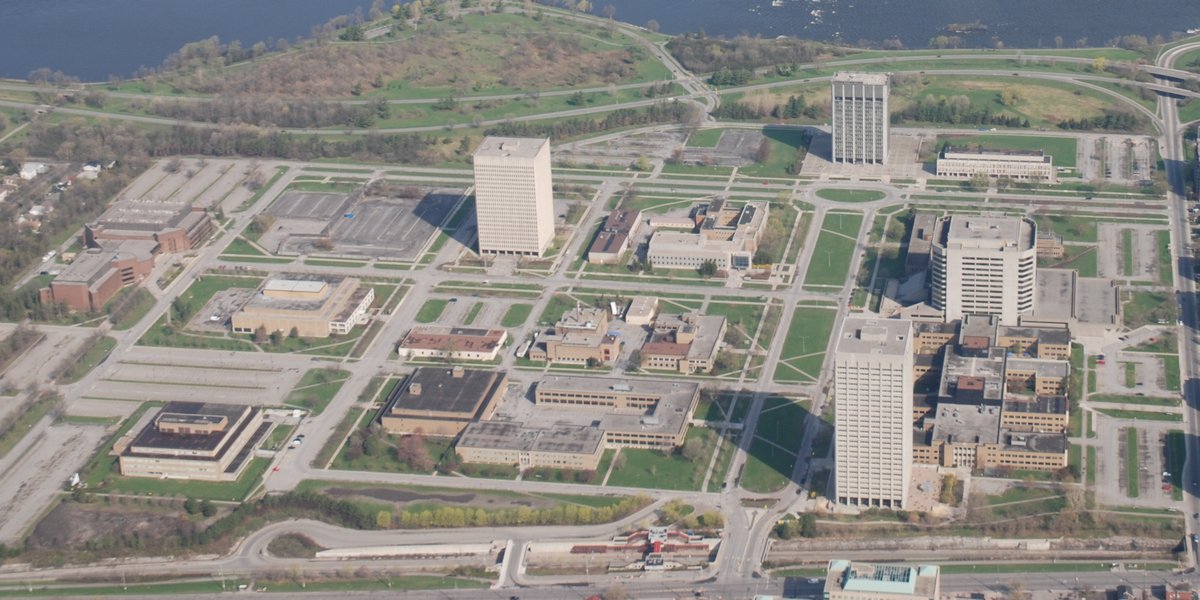
Tunney’s Pasture: Visiting Hours, Tickets, and Guide to Ottawa Historical Sites
Date: 14/06/2025
Introduction
Tunney’s Pasture, set within Ottawa’s urban core, is a unique site where federal government heritage, mid-century modernist architecture, Indigenous cultural initiatives, and ambitious redevelopment converge. Originally farmland managed by Anthony Tunney in the late 1800s, this 49-hectare campus has evolved into a major federal employment hub and is now at the heart of a transformative urban renewal plan. This detailed guide offers comprehensive insights into Tunney’s Pasture’s history, cultural significance, visitor information (including hours and access), nearby attractions, and the area’s exciting future as one of Ottawa’s most dynamic neighborhoods.
Table of Contents
- Overview and Historical Significance
- Early Land Use and the Gréber Plan
- Architectural and Federal Legacy
- Indigenous and Cultural Significance
- Redevelopment and Urban Planning
- Visiting Tunney’s Pasture: Hours, Access, and Tips
- Nearby Attractions and Neighborhoods
- FAQs
- Conclusion
- Sources
Overview and Historical Significance
Tunney’s Pasture’s journey from agricultural land to a prominent federal campus mirrors Ottawa’s own transformation from a lumber town to Canada’s capital. The land, named for Irish immigrant Anthony Tunney, was primarily used for grazing livestock until its acquisition by the federal government in the mid-20th century (Canada.ca; Ottawa Citizen). Guided by the Gréber Plan, which sought to harmonize green space with government infrastructure, Tunney’s Pasture became a showcase for mid-century modernist design and urban planning.
Early Land Use and the Gréber Plan
The area’s initial agricultural use gave way to federal ownership in 1950, as part of the larger Gréber Plan for Ottawa. This vision, led by French urban planner Jacques Gréber, was to create campus-like federal sites integrating open parkland and institutional architecture (Canada.ca). The first major project on site was the heating and cooling plant, still operational today.
Architectural and Federal Legacy
Tunney’s Pasture quickly became a hub for federal departments including Health Canada, Statistics Canada, and Natural Resources Canada (statcan.gc.ca). The Brooke Claxton Building, constructed between 1961 and 1964, is a landmark of Modern International Style and was the first in Ottawa to break the city’s 150-foot height limit, marking a new era in the capital’s skyline (Sustainable Heritage Case Studies). The campus’s grid-like layout, wide lawns, and monumental towers exemplify post-war federal architecture.
Indigenous and Cultural Significance
Since 2002, Tunney’s Pasture has been home to the Iskotew Healing Lodge, a traditional Indigenous sweat lodge designed by Métis architect Douglas Cardinal. This facility, located at the Brooke Claxton Building, provides a unique space for Indigenous and non-Indigenous employees to engage in traditional healing and cultural learning, reflecting Canada’s ongoing commitment to reconciliation (Sustainable Heritage Case Studies). The redevelopment plan acknowledges the site’s location on unceded Algonquin Anishinaabe territory, integrating Indigenous perspectives and land acknowledgments (engage.clc-sic.ca).
Redevelopment and Urban Planning
The 21st-century Tunney’s Pasture Master Plan, led by Public Services and Procurement Canada and the Canada Lands Company, is guiding a 25-year transformation. The redevelopment will:
- Add up to 9,000 new housing units, with at least 20% designated as affordable (Capital Current)
- Expand transit and active transportation, centered around the fully accessible Tunney’s Pasture LRT station
- Preserve and adapt key heritage buildings, including the Brooke Claxton Building and Central Heating Plant
- Create new parks, green spaces, and community amenities
- Integrate sustainability and Indigenous values in design and function
Public consultations and open houses are ongoing to ensure the development reflects community needs and values (Canada Lands Company).
Visiting Tunney’s Pasture: Hours, Access, and Tips
Visiting Hours & Access
- Grounds: Open to the public during daylight hours, year-round. No tickets or admission fees are required.
- Buildings: Access is restricted to authorized personnel; public tours are not routinely available.
Getting There
- Transit: The Tunney’s Pasture LRT station (O-Train Line 1) is the main entry point, providing fast connections to downtown and the city’s west end (wikipedia.org).
- Parking: Designated visitor parking is available; payment is required via kiosks or the PayByPhone app (statcan.gc.ca). Accessible parking is provided; short-term pick-up/drop-off zones are also marked (Reddit Ottawa; Reddit Ottawa).
Accessibility
- The campus and transit station are fully accessible with elevators, ramps, and accessible pathways.
Visitor Amenities
- Restrooms: Limited on campus; available in nearby neighborhoods.
- Food & Drink: Wellington West and Parkdale Market, just south of Tunney’s Pasture, offer diverse dining options (wellingtonwest.ca).
Recreation & Photography
- Green Spaces: Expansive lawns and mature trees provide settings for picnics, relaxation, and informal recreation.
- Trails: The Kichi Sibi multi-use trail follows the Ottawa River, ideal for cyclists and walkers year-round; the winter trail is groomed for skiing and snowshoeing (wellingtonvillageca.blogspot.com).
- Photography: The campus’s modernist buildings, open lawns, and river views create striking photo opportunities.
Nearby Attractions and Neighborhoods
- Wellington West, Hintonburg, and Wellington Village: Bustling districts known for independent shops, cafes, galleries, and community events (wellingtonwest.ca).
- Parkdale Market: A local favorite for fresh produce and specialty foods.
- Ottawa River Pathways: Offer scenic vistas and access to NCC parkways for outdoor activities.
Frequently Asked Questions (FAQ)
Q: Are there official visiting hours or required tickets for Tunney’s Pasture?
A: The grounds are accessible during daylight hours and are free to visit. No tickets are required.
Q: Is parking available for visitors?
A: Yes, visitor parking (including accessible spots) is available for a fee.
Q: Are guided tours or special events offered?
A: Regular public tours are not offered, but occasional public events and cultural programs may take place. Check community listings and federal government sites for updates.
Q: How do I get there by public transit?
A: The Tunney’s Pasture LRT station is a central transit hub, with multiple OC Transpo bus routes also serving the area.
Q: What amenities are available for visitors?
A: Restrooms and food services are limited on campus, but plentiful in nearby neighborhoods.
Conclusion
Tunney’s Pasture is more than a federal office campus—it is a living landscape where Ottawa’s history, architectural ambition, Indigenous cultural practices, and urban transformation meet. As redevelopment accelerates, the site is poised to become a model of sustainable, inclusive, and vibrant urban living. Whether you’re a history buff, culture seeker, outdoor enthusiast, or prospective resident, Tunney’s Pasture offers a unique window into Ottawa’s past and future.
To stay informed about redevelopment progress, visiting tips, and related Ottawa historical sites, download the Audiala app and follow us on social media. Explore Tunney’s Pasture and experience where Canada’s legacy meets tomorrow’s city.
Sources
- This article references the following sources for accuracy and additional information:
